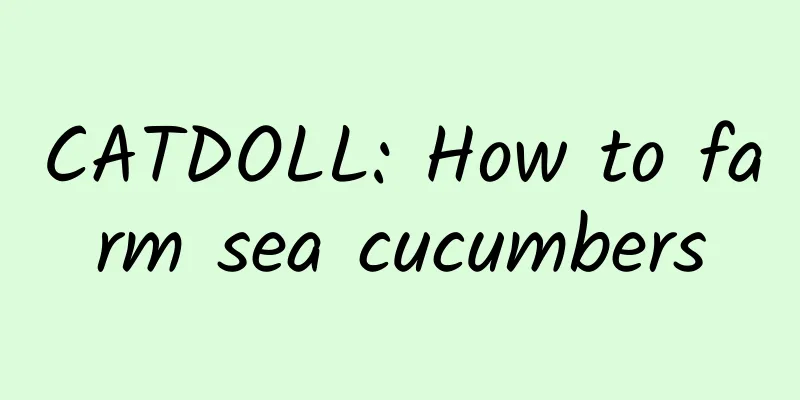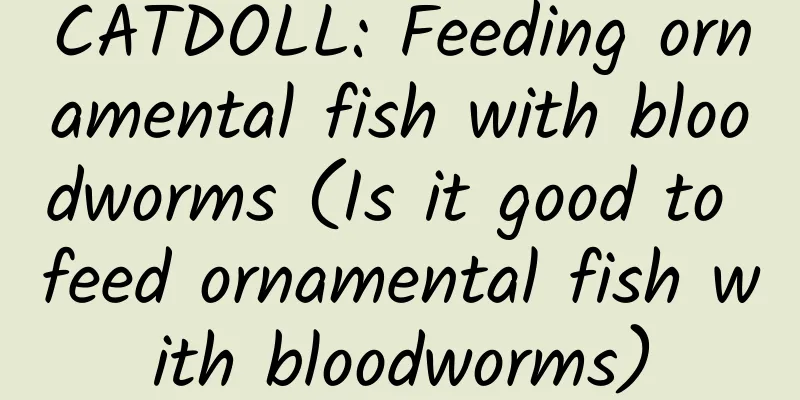CATDOLL : CATDOLL: How to farm sea cucumbers

|
Construction of ginseng pond In the mid-tidal zone or low-tidal zone, taking advantage of the geographical situation, preferably with rocky reef bottom, concrete and stone are used to enclose ponds of varying sizes. The walls of windy sea areas should be thickened and reinforced. During low tide, the water storage should be no less than 1.5 meters and no leakage should be allowed. The selected sea area should not be polluted, especially oil pollution. Each breeding pond should have an inlet and outlet gate. The replacement of seawater in the pond should preferably rely on natural tides. The daily water replacement should not be less than about 30%, and the average water depth in the pond should be more than 1.5 meters. Artificial sea cucumber reef The purpose of building artificial sea cucumber reefs is to provide a hiding place for sea cucumbers and to breed a large amount of seaweed and water plants for them to live, feed and hibernate. The materials of artificial sea cucumber reefs can be tiles, bricks, abandoned scallop cages, and even slightly larger stones of varying shapes are also good sea cucumber reefs. The placement of sea cucumber reefs is based on the principle of increasing the hiding space of sea cucumbers as much as possible. They can be placed in rows or piles. The more sea cucumber reefs are placed, the better according to actual conditions. Transportation of ginseng seedlings Ginseng seedlings are usually transported by wet and dry methods. The so-called wet transportation is to put the ginseng seedlings in a canvas barrel, with about 300 ginseng seedlings in each barrel and add about 0.2 cubic meters of water. The so-called dry transportation is to put the ginseng seedlings in a plastic turnover box, lay 2cm thick absorbent cotton on the bottom of the box, and lay two layers of gauze on top, soak it with seawater, lay the ginseng seedlings evenly and flat, and use plastic cloth to block the wind on the outside. When the weather is dry and hot, it is necessary to spray seawater appropriately during the journey. Release of ginseng seedlings The stocking density of ginseng seedlings can be reasonably controlled according to the different specifications of ginseng seedlings. It is adjusted according to the principle of less large seedlings and more small seedlings. Usually, the stocking density of 300-500 heads/jin seedlings can be controlled at 10-30 heads/square meter, and the final survival rate can reach about 35%. The stocking density of ginseng seedlings is not only related to water temperature and water quality, but also to feeding management. Reasonable feeding of high-quality sea cucumber compound feed can effectively improve the survival rate and shorten the breeding cycle. Feeding Soak the sea cucumber feed in water for 10-15 minutes, then sprinkle it evenly on the sea cucumber reef and its vicinity. The feeding amount can be 3-5% of the total weight of the sea cucumbers in the pond. Generally, feed once in the morning and evening every day, or every other day. Be careful not to drain the water when feeding every day to avoid waste of feed. Generally, no feeding is done from July to September. Note: Sea cucumbers can be harvested when their weight reaches 250 grams or more. The harvesting time can be flexibly controlled according to market prices and breeding cycles. Generally, more are harvested in late autumn and early winter. The main method of harvesting is diving. If conditions permit, the pond water can be drained for picking. The peculiar life habits of sea cucumbers In the tidal ocean, sea cucumbers can be said to have very peculiar living habits. From the appearance, it is a tubular invertebrate, with a brown body covered with many fleshy spines. It has neither a graceful and moving body nor superb swimming skills. It can generally only crawl and wriggle slowly on the seabed. It is a "resident" living at the bottom of the ocean, away from the world. Although sea cucumbers are unknown and unpopular, they have a very prosperous family. There are currently more than 800 species in the world. However, most of these species are toxins and cannot be eaten. More than 20 of them are delicious dishes at banquets. For example, the sea cucumbers produced in the Yellow Sea and Bohai Sea and the plum blossom sea cucumbers in the South China Sea are edible sea cucumbers. In terms of personality, sea cucumbers are very strange and solitary. They usually live in seclusion and only frequent muddy and sandy areas and seaweeds to forage for food. Once they are full and have enough water, they live in the pores of reefs or under large slabs because the waves and currents in these places are relatively calm. The recipes of sea cucumbers for three meals a day are really simple. They eat mud, seaweed and microorganisms that other marine animals disdain. The most incredible thing is that sea cucumbers have a strong regenerative ability. Scientists have conducted experiments on them, cutting their bodies into three sections and then placing them in seawater for further cultivation. Who would have thought that after half a year, each section of the sea cucumber was not only still alive, but also grew into a complete sea cucumber. What is even more amazing is that when sea cucumbers encounter attacks or threats from hostile people, they will actually expel all their internal organs through the anus and throw them away, in order to confuse the hostile people, while they take the opportunity to escape. Sea cucumbers will not die after throwing away their internal organs, they can still live well. After a few months, they can grow new and intact internal organs in their bodies. It has been observed that sea cucumbers can repeatedly expel their internal organs and grow them again during their lives. Some animals on land, such as frogs, snails, and snakes, choose to "hibernate" in winter, but sea cucumbers, on the contrary, choose to "estivate" in summer. At this time, sea cucumbers have just experienced "giving birth" and are weak and need to rest. During the summer hibernation, they do not eat or move, and sleep with their fishy parts facing up, close to the rocks on the seabed. When they wake up, it is already late autumn on land. When sea cucumbers are caught, their bodies are usually large, but if they are not processed in time, they will slowly shrink and eventually turn into a pool of juice. It turns out that the sea cucumbers are full of seawater and contain a lot of protein, which can easily decompose into various amino acids like juice. For this reason, after people bring sea cucumbers ashore, they usually need to quickly remove their internal organs, boil them with clean water, pickle them with salt, and then air-dry them in the sun to make them into dried sea cucumbers. The main breeding methods and key points of sea cucumbers are briefly introduced as follows. I. Key points of shrimp pond breeding 1. Use existing shrimp ponds to put stones, tiles, old tires, etc. as artificial reefs for sea cucumbers to live in. 2. The density of young sea cucumbers is about 5 cm in length, and 3,000 to 5,000 seedlings are put per mu. 3. Sea cucumbers feed on benthic diatoms and organic debris attached to the reefs. At the same time, they can be fed with artificial compound feeds, or algae such as sargassum, kelp, and wakame. 4. The water depth of the shrimp pond should be maintained at 1.5 meters to 2.0 meters, and the water level should be high in summer and winter to facilitate the smooth hibernation and wintering of sea cucumbers. 5. It is strictly forbidden to use chemical disinfectants and discharge oil into the shrimp pond to prevent the sea cucumber from self-dissolving. In addition, attention should be paid to the temperature and salinity of the pond water. When adding water, close attention should be paid to the water environment around the pond to ensure that the daily exchange volume of the pond water is 10% to 15%. II. Key points of marine raft breeding 1. The sea area has smooth tides, no strong winds and waves, and no pollution from industrial and domestic sewage. 2. Scallop cages, abalone cages, and plastic barrels are generally used for breeding, and most of them are mixed with abalone. The length of the sea cucumber seedlings is about 5 cm, the density is 200 to 300 heads per square meter, the hanging water layer is between 5 meters and 8 meters, and the cage spacing is 3 meters to 4 meters. 3. The bait is sargassum, kelp or artificial bait. The density should be gradually reduced as the sea cucumbers grow up, and the degree of damage to the net cages should be checked at any time. 4. The cage net should be sunk in time before the arrival of typhoons or storm surges to avoid losses. 5. Rafting sea cucumbers at sea can also be mixed with algae. III. Key points of seabed cage breeding 1. Choose an inner bay area with calm winds, smooth tides, and no large amount of fresh water injection. Use thick steel bars to make a net cage, which can be round or rectangular, covered with nets, and put a number of stones (3 kg to 5 kg/piece) inside. 2. The stocking density is 200 to 300 3 cm to 5 cm sea cucumber seedlings per square meter. The bait is artificial compound bait or kelp, sargassum, etc., and it can be fed every 3 to 5 days or once a week according to the situation. 3. Pay attention to the damage of the nets on a daily basis, and timely sparse the density according to the growth rate of sea cucumbers. IV. Key points of intertidal stone-building culture 1. In the intertidal zone, according to the terrain characteristics, use steel bars, stones, and cement to build dams, and raise sea cucumbers in the dam. 2. The height of the dam should be determined according to the highest tidal level in previous years, and drainage holes must be left at the bottom of the dam for natural drainage. 3. The stocking density is 20,000 1 cm to 2 cm sea cucumber seedlings per mu, and 8,000 to 10,000 5 cm sea cucumber seedlings per mu. 4. The bait can be artificial compound bait, or kelp, benthic diatoms, sargassum, etc. 5. Note that the water level should be raised in advance during the rainy season, and chemical disinfectants and oil pollution are strictly prohibited to prevent the sea cucumber from self-dissolving. Starfish and other harmful organisms should be removed regularly. V. Key points of factory-based abalone and sea cucumber co-culture 1. Use the existing facilities in the factory-based abalone workshop to co-culture sea cucumbers. 2. The co-culture density is 100 4 cm abalone/square meter, and 6 to 8 3 cm to 4 cm sea cucumbers/square meter. 3. During the breeding period, deep sea water wells should be used for cooling in summer, and boilers can be used to increase the water temperature in winter to prevent the sea cucumbers from hibernating and shorten the growth cycle. |
<<: CATDOLL: How to fish for big tilapia
>>: CATDOLL: How to Farm Catfish
Recommend
CATDOLL: What are the precautions and contraindications for raising ants? (What are the precautions and contraindications for raising ants?)
1. How to raise ants yourself (without using Ant ...
CATDOLL: What is the difference between cod and silver cod?
Silver cod is a deep-sea fish, a saltwater fish, ...
CATDOLL: How should we deal with the common disease Saprolegniasis that occurs during mandarin fish farming?
Strengthen parent fish cultivation and improve th...
CATDOLL: How do red worms protect themselves?
1. How to store red worms so they can survive per...
CATDOLL: The most hygienic and environmentally friendly method of producing maggots.
1. The most hygienic and environmentally friendly...
CATDOLL: How to quickly kill flies
Question 1: How to eliminate flies quickly and ef...
CATDOLL: What are the seasonal issues in silkworm rearing? (English: What are the seasonal issues in silkworm rearing?)
1. Which season is suitable for raising silkworms...
How to stop cats from shedding hair
1. Provide the right nutrition: Make sure your ca...
CATDOLL: Bowen Feed: Magical Effects and Nutritional Interpretation
Introduction Feed is an indispensable part of the...
CATDOLL: The sad diary is the most painful
The most painful thing about the sad diary Some s...
What should you pay attention to when bathing your cat?
Things to note when bathing your cat: 1. Do not b...
CATDOLL: How much does a pound of earthworms cost?
1. How much does a pound of earthworms cost? Curr...
CATDOLL: Profit analysis of beef cattle farming Straw fermentation
Analysis of the profit of beef cattle breeding: f...
CATDOLL: What are the uses and functions of breeding grasshoppers? (What are the uses and functions of breeding grasshoppers?)
1. What are the advantages and disadvantages of r...
CATDOLL: How to build a scorpion breeding farm
Scorpions can be raised outdoors or indoors depen...









